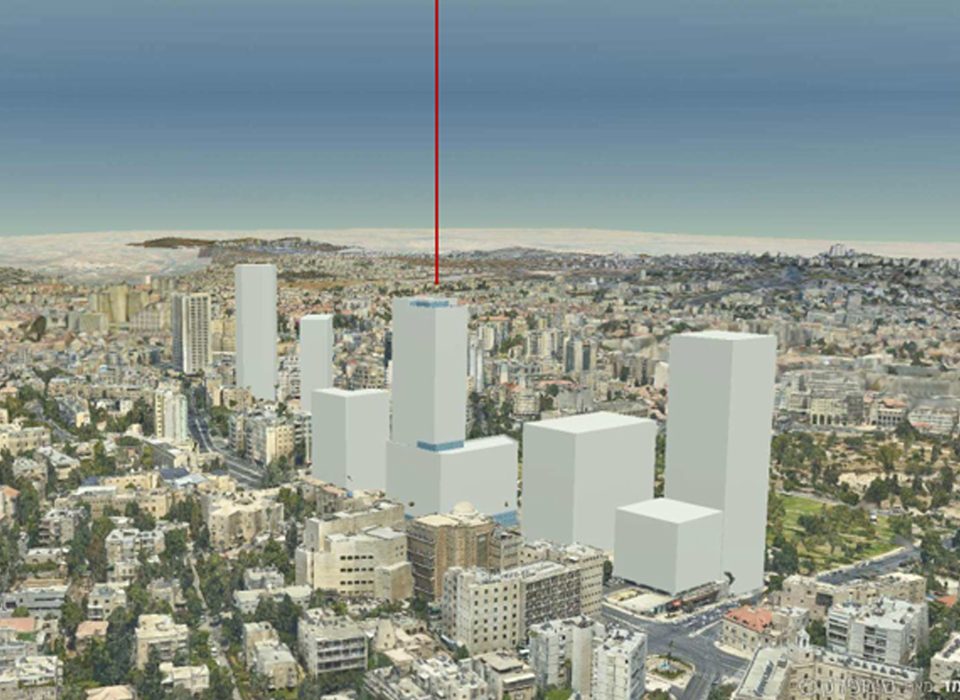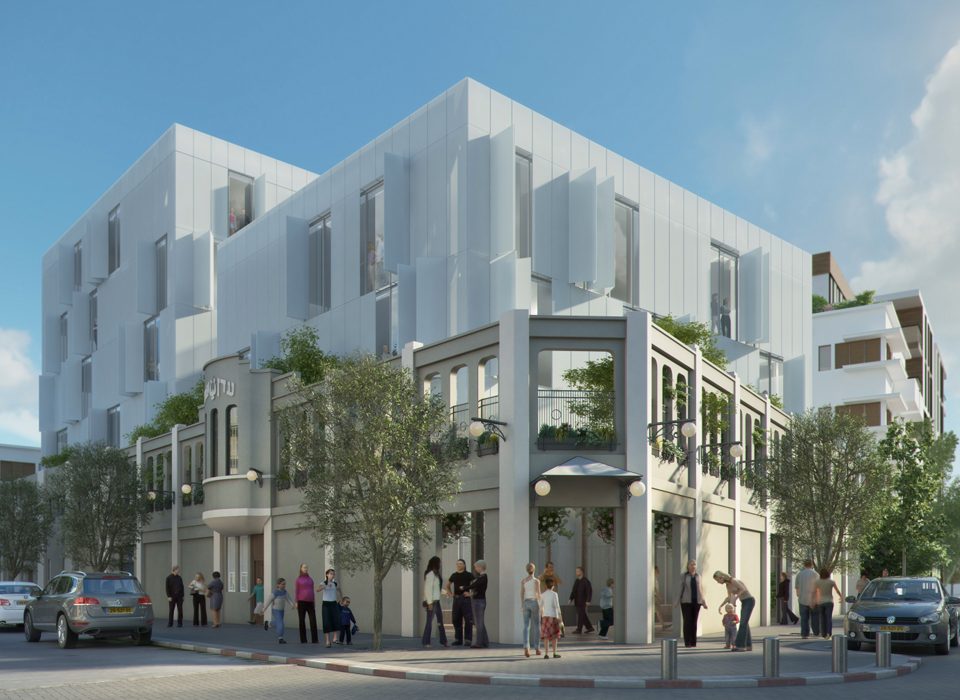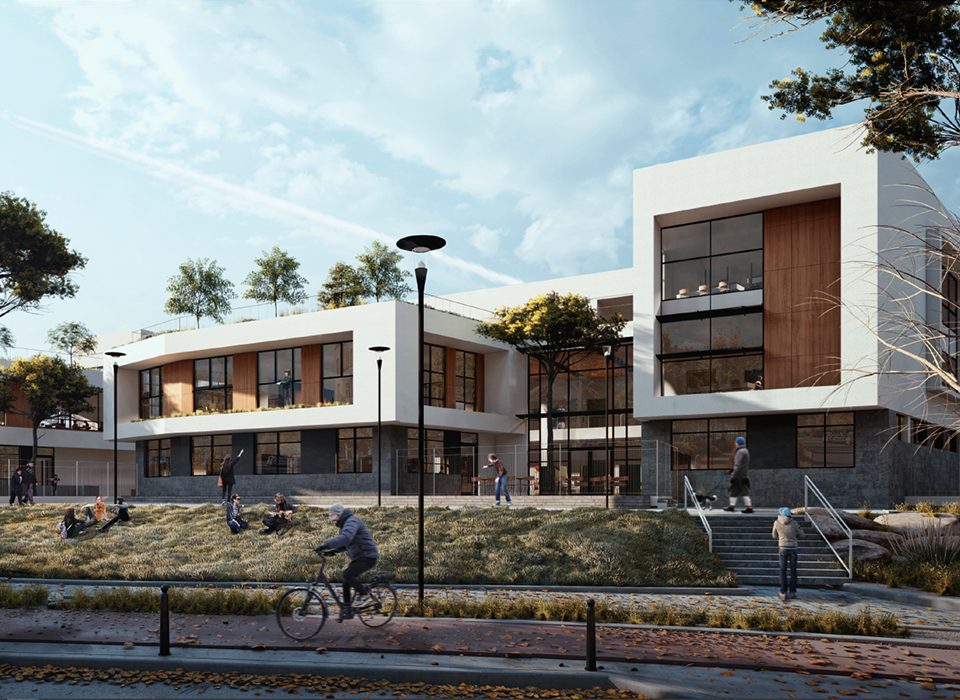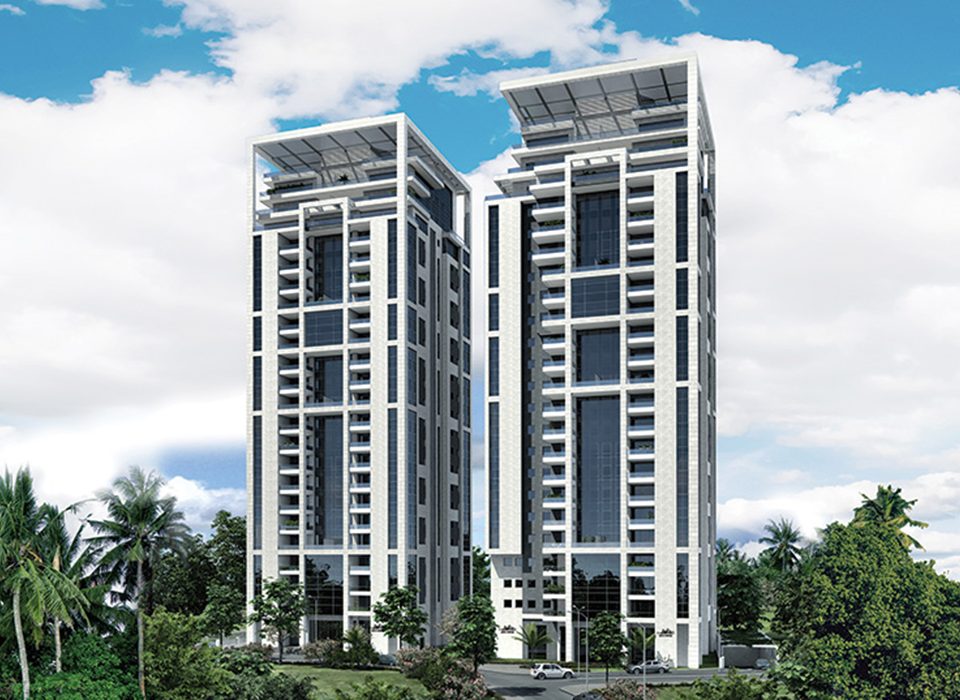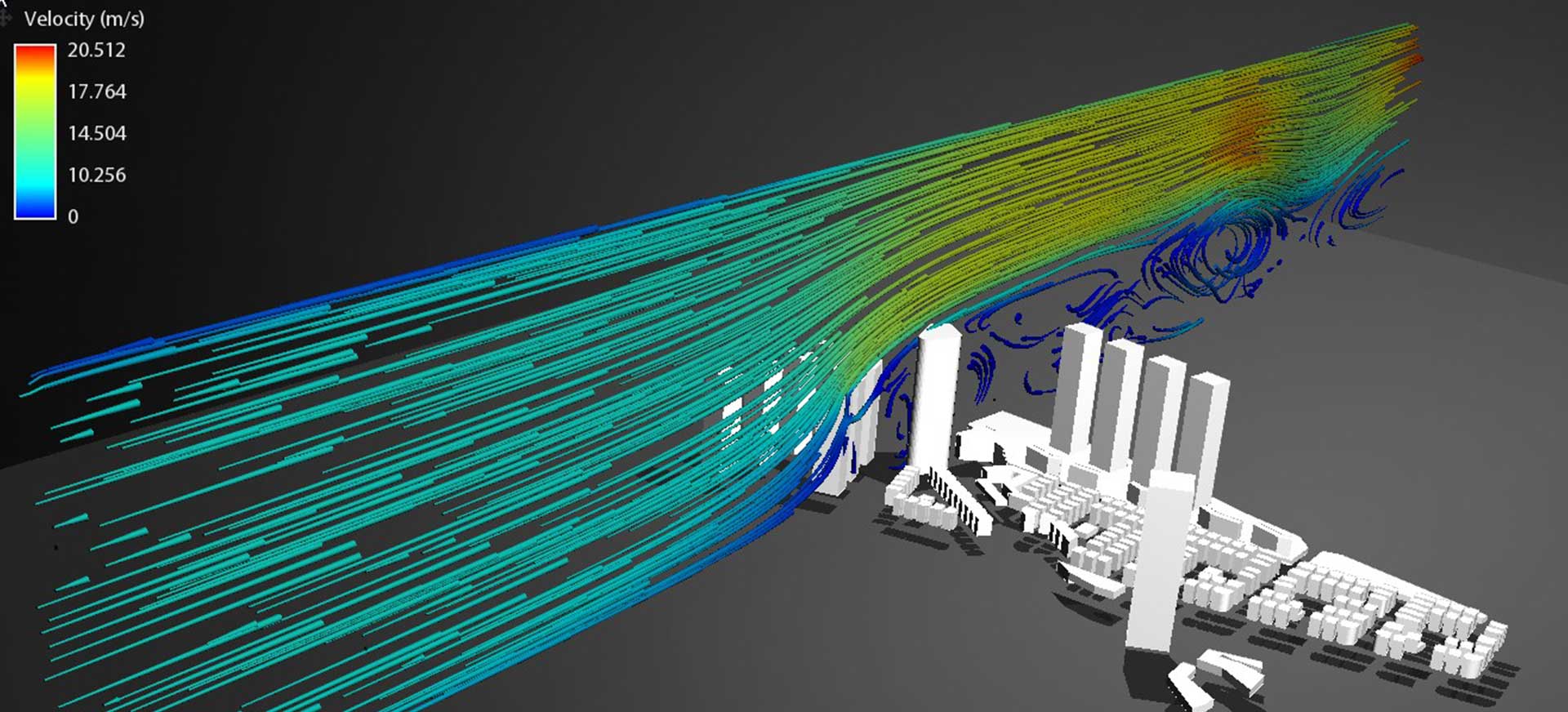
CFD – Computerized Wind Analysis
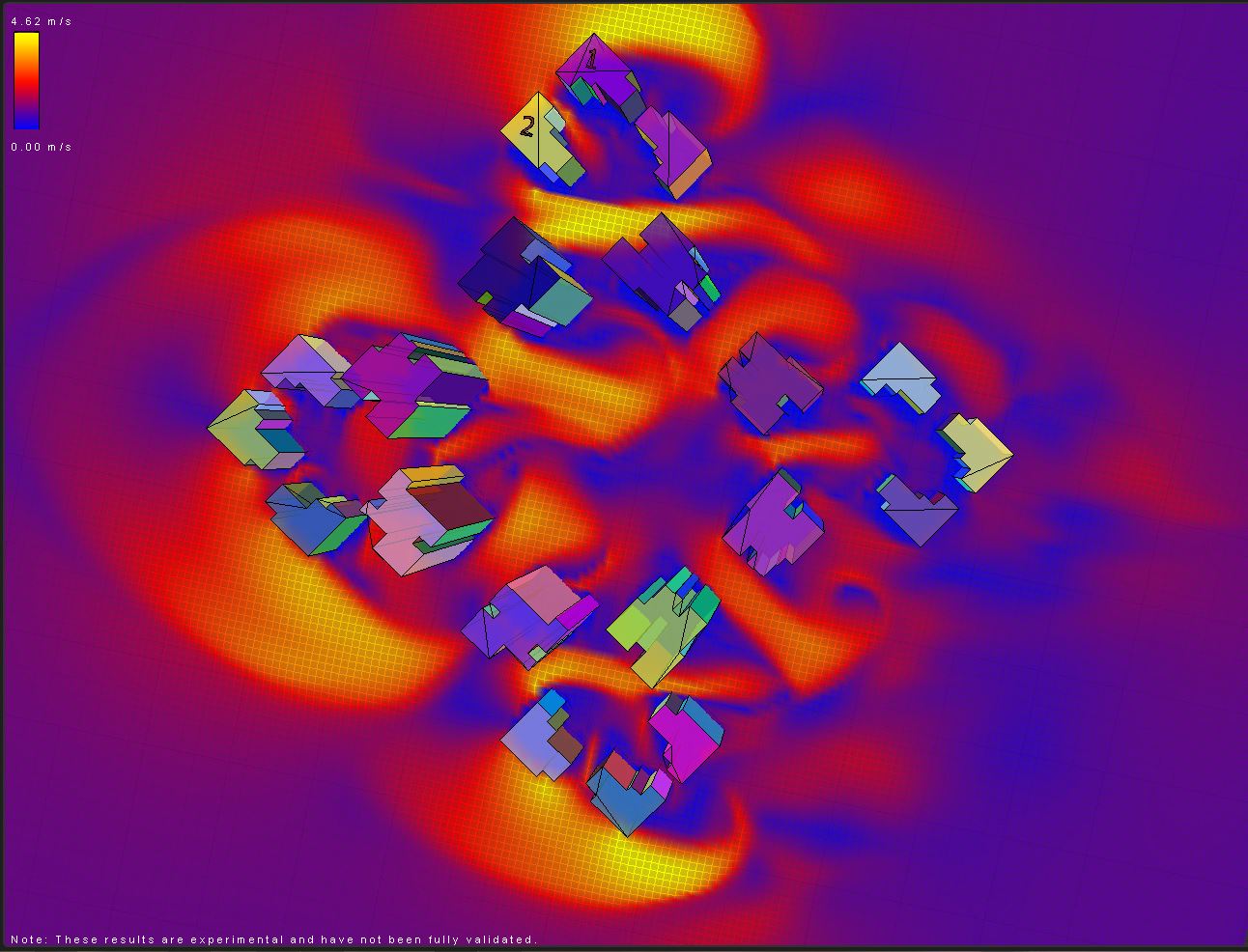
תדהר על הפארק ראש העין
The exponentially increasing population along with increasing urban density demands fresh and large scale public spaces. The design of public spaces is one of the most crucial issues of today. Desirable wind effects are crucial to public spaces. If the microclimate is pleasant, public spaces are inviting and livable. Wind analysis exposes the effects of proposed buildings on wind behavior in their surroundings before they are constructed. Moreover, wind analysis is becoming a common requirement of the building process to ensure that projects create safe conditions.
Wind analysis is conducted through Computerized Fluid Dynamic simulation (CFD). Various parameters such as wind speed, frequency, and adjacent public spaces affect the overall wind behavior.






